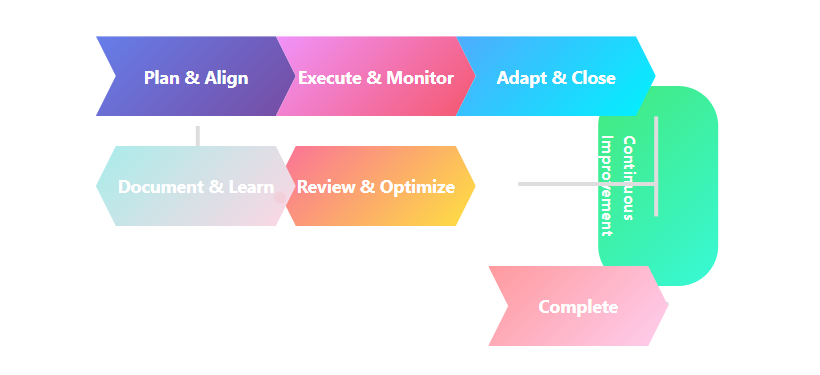A well-defined Plan of Record (POR) ensures projects stay on track, stakeholders remain aligned, and risks are proactively managed. Without a clear plan, teams face miscommunication, scope creep, and missed deadlines.
Our plan of record template transforms project planning into a living document. It ensures transparency, measurable progress, and adaptive execution.
Key components of the POR template
The template is structured for clarity, actionability, and stakeholder engagement. It includes:
1. Initiative summary
Clearly define the project’s intent, business value, and measurable outcomes.
- Project Name
- Business Objective
- Success Metrics (KPIs)
- Alignment with Strategic Goals
2. Stakeholders & ownership
Eliminate ambiguity by defining roles and responsibilities. Here’s an example of how to do it:
3. Scope & deliverables
Prevent scope creep by explicitly listing included/excluded work.
In-Scope Example:
- "Refactor API gateway for horizontal scaling."
- "Implement caching layer using Redis."
- "Documentation for enterprise developers."
Out-of-Scope Example:
- "Mobile app updates (handled by separate team)."
- "UI redesigns (planned for Phase 2)."
Dependencies Example:
- "Cloud infrastructure upgrade (must complete by Q2)."
- "Third-party auth provider (Okta) API updates."
4. Timeline & milestones
Track progress against deadlines with clear milestones and avoid projects from falling behind the schedule. A phased approach to execution involves:
POR implementation roadmap

Adopt the POR in three phases:
Phase 1: Plan & align
Lay the foundation by defining objectives and securing stakeholder buy-in.
- Draft POR with stakeholders.
- Secure sign-off on scope, budget, and timeline.
Phase 2: Execute & monitor
Drive progress with disciplined oversight and real-time adjustments.
- Weekly checkpoints to update status/risks.
- Automated alerts for timeline/budget deviations.
Phase 3: Adapt & close
Refine processes and formalize outcomes for future success.
- Retrospective to capture lessons learned.
- Finalize documentation for audit/reference.
Why traditional plans don’t always work
Even well-intentioned project plans often fall short. Static documents buried in inboxes or outdated spreadsheets can’t keep up with the pace of execution. When plans aren’t actively maintained, teams lose visibility, responsibilities blur, and key risks go unnoticed until it's too late.
The Plan of Record template solves these challenges by:
- Centralizing live updates: Keeps all project details in one shared, always-up-to-date document.
- Enforcing accountability with RACI matrices: Clarifies exactly who’s responsible, accountable, consulted, and informed, no more dropped tasks.
- Flagging risks early with mitigation steps: Issues are tracked in real time with predefined responses to prevent escalation.
- Improving cross-team visibility: Everyone knows the current status, dependencies, and upcoming deliverables, without chasing updates.
With a dynamic POR in place, your project plan becomes a tool for progress, not just documentation.
Elevate your project execution
A dynamic Plan of Record ensures alignment, agility, and results.
Join the ranks of high-performing teams who've turned project execution from a challenge into a competitive advantage.
The blueprint for success is here - will you use it?







